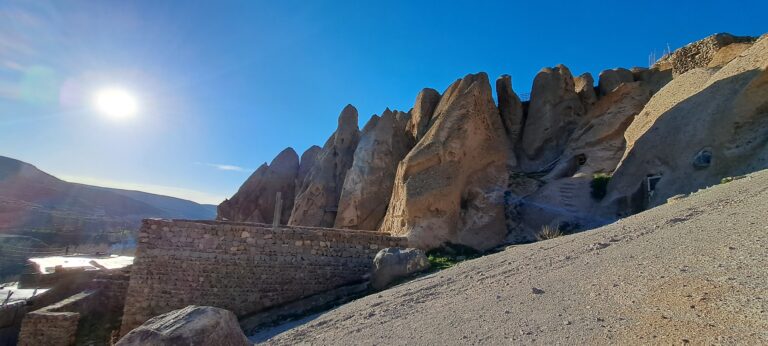The geography of Iran is diverse and fascinating. Iran is a country in Western Asia that covers an area of 1,648,195 square kilometers (636,372 square miles), making it the 17th largest country in the world. It has a population of about 85 million people, making it the 18th most populous country in the world. Iran is also home to many ethnic groups, cultures, and languages.
Iran is bordered by eight countries: Armenia, Azerbaijan, Turkmenistan, Afghanistan, Pakistan, Iraq, Turkey, and the Nakhchivan exclave of Azerbaijan. The country also has a coastline along the Caspian Sea in the north, the Persian Gulf and the Gulf of Oman in the south, and several islands in these waters. Iran’s location makes it a strategic and influential country in the region and beyond.
Iran’s terrain is mostly mountainous, with several ranges surrounding high interior basins. The main mountain chain is the Zagros Mountains, which run from northwest to southeast and divide the country into two distinct climatic zones: a humid and fertile region in the north and west, and a dry and arid region in the south and east. The highest point in Iran is Mount Damavand, which is a volcanic peak that reaches 5,610 meters (18,406 feet) above sea level. The lowest point in Iran is the Caspian Sea, which is 28 meters (92 feet) below sea level.
Iran’s climate is mostly arid or semi-arid, with hot summers and cold winters. However, there are variations depending on the altitude, latitude, and proximity to water. The northern regions have a temperate climate with four distinct seasons and moderate rainfall. The southern regions have a subtropical climate with mild winters and hot and humid summers. The central regions have a continental climate with extreme temperatures and scarce precipitation.
Iran’s natural resources include oil, natural gas, coal, copper, iron ore, zinc, lead, chromite, uranium, gold, silver, salt, gypsum, limestone, marble, turquoise, and pearls. Iran is one of the world’s largest producers and exporters of oil and natural gas. Iran also has a rich biodiversity with various ecosystems and habitats that support many species of plants and animals. Some of the notable wildlife in Iran include leopards, cheetahs, bears, wolves,
foxes, hyenas, jackals, gazelles, ibexes, wild goats, wild sheep, wild boars, deer, antelopes, camels, horses, donkeys, mules, eagles, vultures, falcons, hawks, owls, partridges, pheasants, flamingos, pelicans, storks, herons, cranes, ducks, geese, swans, turtles, crocodiles, snakes, lizards, scorpions, spiders, butterflies, bees, etc.
Persian language is the official language of Iran and the most widely spoken language in the country. Learning Persian language can help you explore the geography of Iran and its culture more deeply. It can help you read maps, signs, labels, newspapers, books, etc., that are in Persian language. Learning Persian language can also help you communicate with Iranians and learn about their views, experiences, stories, etc., that are related to their geography. It can also help you appreciate the beauty and diversity of Iranian poetry, literature, art, music, etc., that are inspired by their geography. Learning Persian language can also enhance your knowledge and perspective on the world.
Make sure you complete your comprehension of the geography of Iran by listening to the Persian podcast about the history of Iran.
To learn Persian grammar, here you can find lessons on Persian Grammar.
Are you interested in learning Persian with music, HERE is where you can find many slow Persian songs with their lyrics.
Practice Dubbing the characters in Persian series HERE.
Listen to famous speeches from Iranian political figures, and learn about their mindset and a little bit of history through their talk HERE


